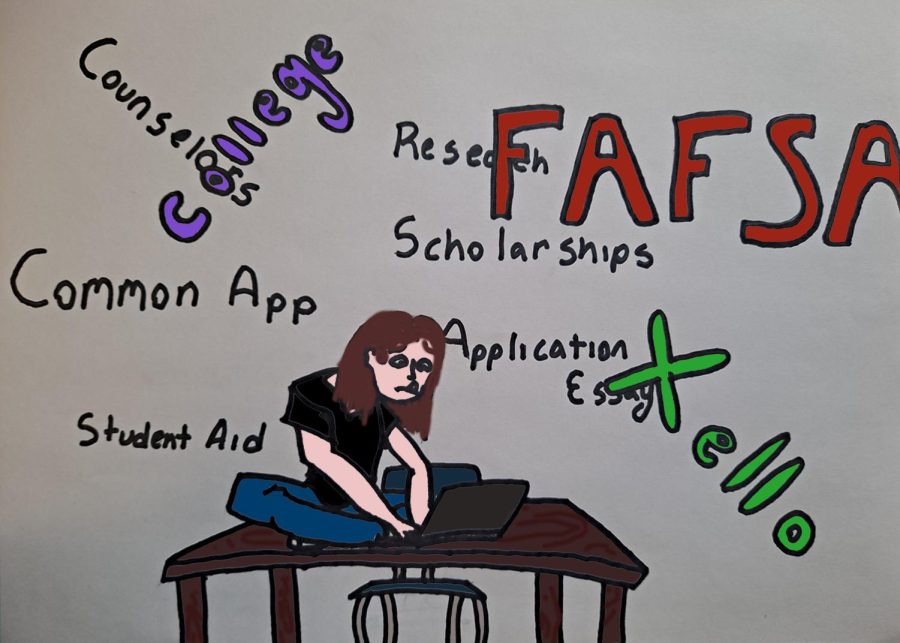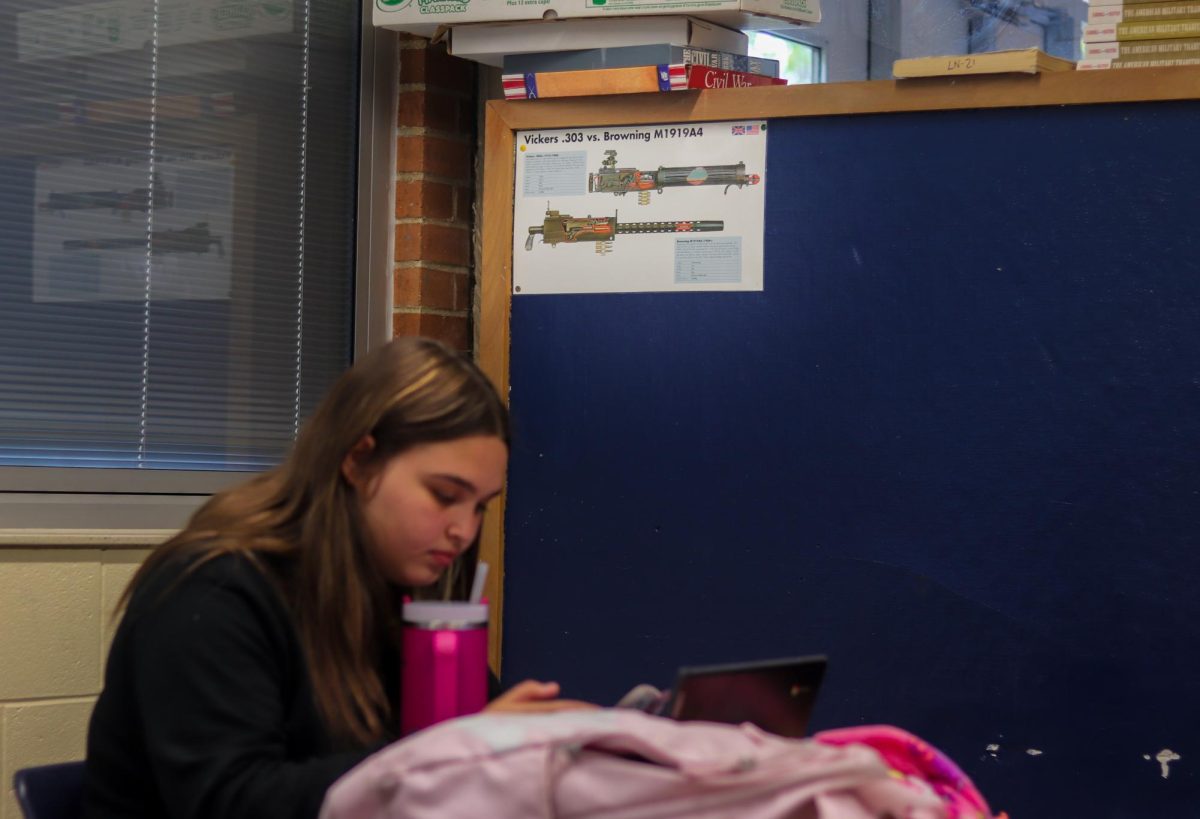College application tips for seniors
Credit: Thea Pipe
November 16, 2022
As senior year begins, many students have been or are starting to work through the college application process. Here are some useful tips and resources to help with any issues students may encounter in their college application endeavors.
As many know, the LN counselors are always a good resource for college advice. Rebecca Learner, the counselor for students with last names L-Q, has advice for students to keep in mind during the application process.
Firstly, seniors should narrow their list of colleges to apply to. Research their options, both in and out of state, private and public. By the time seniors are actually sending out applications, their lists should be between five and ten colleges. There are many ways to narrow that list of colleges such as looking at the teachers, what majors the school offers, and touring the campus to see how it feels.
“When it comes to selecting schools I encourage students to look at some public, some private, and out of state, and do some comparison,” Learner said.
Common App is a good resource for students while applying to colleges. It allows students access to a list of colleges from all over the United States as well as many other countries around the world.
Through the Common App students can build a list of colleges to research and even a list of colleges to apply to, although not all colleges are on the Common App so you may still need to apply directly to your college of choice.
The website allows the student to fill out one application, which will auto fill information into the application form for each of the colleges selected. Though students may need to go through and fill in extra information as needed, it does help streamline the process.
Learner said that the Kalamazoo Promise is an important thing to keep in mind. Learner has two daughters who graduated from Kalamazoo Public Schools, and it saved her about 187 thousand dollars.
The Promise is a way to save on college expenses, and many colleges in Michigan offer study abroad opportunities that allow people to study in another state or country that are covered by the Promise.
Students also have access to a valuable resource through their Clever login: Xello. Xello helps students identify careers and colleges which suit and interest them. They can look at an overview of a college major, and at the bottom they will find a list of colleges in their state which carry that major. They can also look at a career which they may want to pursue, and it will show what level of education they’ll need and what college degrees they may want in order to succeed in that career.
Xello gives students a look at a college’s acceptance rates, their race and gender demographics, their graduation rates, their application requirements, and all sorts of other relevant information to the college that may influence a potential applicant’s feelings about it.
Research is always the most important first step. Student’s should think about what they want to do, research those careers, and find one that they think will suit them best. Then they figure out what kind of education that requires: college or trade school, bachelor’s or master’s degree. They should also consider what they actually need a degree in for their career. From there students should look at colleges, keeping in mind the degree they need and the type of environment they want to learn in.
The next step is the application process itself between Common App and Xello. Once you know what colleges you want to apply to, assuming all the colleges in question are on the Common App, that list can be recreated on the Common App. If one or more of the colleges isn’t on Common App, then the application will need to be filled out on that college’s website.
The first step on the Common App is to fill out a lot of information. Once all seven categories of the preliminary information have been completed, it will autofill for each application being completed, leaving only the information unique to that college blank.
The Common App essay gives a choice of prompts, as will the college specific essays. It’s important to choose an essay which doesn’t pose too much of a challenge while writing. A prompt that relates easily to the writer and conveys important information to the reader will make it easier to write a good essay.
The essay should be the last step in the Common App process, leaving just the college unique information, which should only be a few extra questions and maybe a second essay .
FERPA is a privacy policy about your education history which means that until an individual or their parents give consent, other people won’t be able to see an applicant’s education history. Signing the FERPA agreement on Common App allows colleges to see your education history and information. Once the FERPA form has been completed on Common App, Xello has the option to connect your Xello account to the Common App. Once the two are connected, everything from Common App will be accessible on Xello.
Beyond applying for colleges themselves are scholarships and the Free Application for Federal Student Aid (FAFSA). The FAFSA is relatively simple and can be filled out online on the Federal Student Aid website. The state deadline to apply for aid for the next school year is May 1st of 2023, though some colleges may have an earlier one. The college’s deadline should be accessible from its website or through contacting their financial aid office.
To apply for the FAFSA, the first step is to set up an account, which requires a social security number. The account set-up requires that individuals make their own account, a parent cannot do it on behalf of their child. There are a ton of steps about personal and contact information, and once all of those steps have been completed, the account will need to verify the contact information for two-step login verification, and the account will be in a verification period for the next one to three days.
To complete the FAFSA form itself, applicants must have their social security number, federal income tax returns, W-2s, and any other record of money earned in the last year. If the applicant is under the age of 18, they must also have their parents’ information. Whether the applicant is under 18 or not, it may be helpful to have a parent present as accessing and understanding some of the required information may be difficult and require help.
After the FAFSA has been completed, the applicant will receive a Student Aid Report listing the student aid they qualify for. The applicant can accept or decline the federal aid being offered, as well as accept only a portion of what is being offered. That money won’t need to be repaid until after the applicant has finished college.












